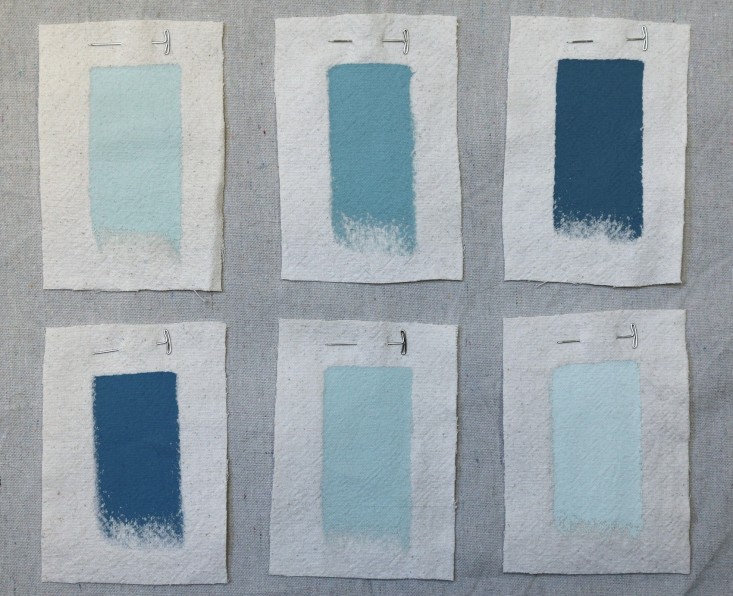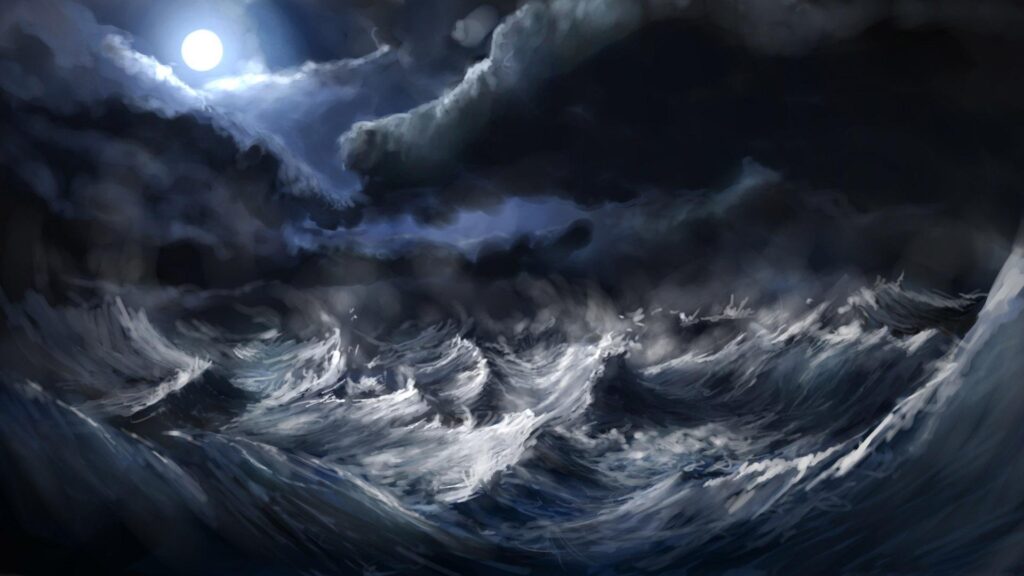The psychology of the colour blue, as well as other colours, is very important in the field of marketing and advertising, as well as other fields that will be mentioned later.
What do you feel about the colour blue? People have long believed that certain colours can evoke different moods and feelings, and some research has supported the idea that colours can have psychological effects on people.
Blue is a colour often found in nature, like the pale blue of a daytime sky or the deep dark blue of a deep pond. Perhaps because of this, people often describe blue as calm and serene. However, as a cool colour, blue can sometimes appear icy, distant or even cold.
Learn about some of the feelings and moods generated by the colour blue.
Some details about the psychology of the colour blue

- Because blue is preferred by so many people, it is often considered a non-threatening colour that can appear conservative and traditional.
- Blue evokes feelings of calm or serenity. It is often described as peaceful, calm, confident and orderly.
- Blue is often seen as a sign of stability and reliability. Companies that want to project an image of security often use blue in their advertising and marketing efforts.
- Blue can also create feelings of sadness or detachment. Think of how a painting with a lot of blue, such as those done by Picasso during his “blue period”, can look very lonely, sad or forlorn.
- Blue is often used to decorate offices because research has shown that people are more productive in blue rooms.
- Blue is one of the most popular colours, but it is one of the least desirable. Some weight loss plans even recommend eating off a blue plate. Blue rarely occurs naturally in food, apart from blueberries and some plums. In addition, humans are geared to avoid foods that are poisonous and blue dye in food is often a sign of spoilage or poison.
- Blue can also reduce pulse and body temperature.
- Think about how blue is used in language: blue moon, blue Monday, blue blood, the blues and blue ribbon.
While exploring the psychology of the colour blue can be interesting, it is also important to remember that reactions to colour can be very personal. Past experiences can influence the way people feel about and respond to different colours.
Don't miss our ultimate guide on graphic design!
Discover the best online courses, master's degrees, and university programs for a successful career in design with our "Ultimate Guide to Studying Graphic Design: The Best Options for a Successful Career". Shape your future in the creative industry today.View Post Read Later
Physical effects of the colour blue

There’s a reason we think of blue as relaxing; in fact, it tends to lower heart rate, blood pressure and even body temperature.
Blue can have an effect on the pituitary gland, affecting our sleep patterns, and can also slow down our breathing.
Memory studies have shown that blue light improves memory, and blue light can even kill some bacteria.
Symbolism and psychology of the colour blue
Although blue evokes images of sky and sea, it is also the colour of courage and dedication. Blue represents introspective journeys and symbolises wisdom and depth of understanding. But blue is also a symbol of depression and the depths of the human psyche. Blue represents serenity, rather than passion, and is the colour of all that is constant and unchanging.
Positive associations in the psychology of the colour blue

The water and turquoise of Caribbean waters often generate positive feelings, and the blue of police uniforms evokes protection, bravery and loyalty.
Blue is associated with peaceful rest, deep insight and spiritual fulfilment. Professional uses of blue in advertising, marketing and psychology, have connotations of stability, wisdom and serenity.
Negative Associations

The deep indigo of stormy seas can carry more threatening or frightening associations, and can make us uneasy or fearful of deeply held secrets.
Excessive use of blue can come across as cold and impersonal, even unfriendly. The association of blue with depression and sadness is also widespread, and deep blue is a harbinger of night and darkness.
The Colour Blue in Spirituality

In the Eastern mysticism of India, we can find two shades of the colour blue, each associated with different Chakras and with different connotations, one is blue and the other is indigo, a colour between blue and purple.
Blue: The colour of the throat chakra, also known as Visuddha. This chakra is located in the throat. It is related to the throat, neck, hands and arms.
The throat chakra is related to speech and hearing, and is conducive to spiritual communication.
Gemstones that help the throat chakra are turquoise, aquamarine, lapis lazuli, sodalite, quartz, angelite and aquatic aura.
Indigo: The colour of the brow or third eye chakra, also known as Ajna. This chakra is located between the eyebrows.
This chakra is our link to the universal unconscious. Opening this chakra can help with clear vision, intuition, wholeness and diminish feelings of despair. Gemstones amethyst, moonstone, and augilite.
What did you think of the psychology of the colour blue?
While some people consider blue to be a sad or sombre colour, others may interpret it as peaceful or inspiring. Pay attention to how the colour blue makes you feel and consider some of the different influences that may have influenced your feelings.
Would you like to discover the psychology and symbolism of other colours? Check out our articles on colour psychology, where you will learn the meaning of each colour, their symbolism, their uses in advertising and marketing and many other interesting details.


